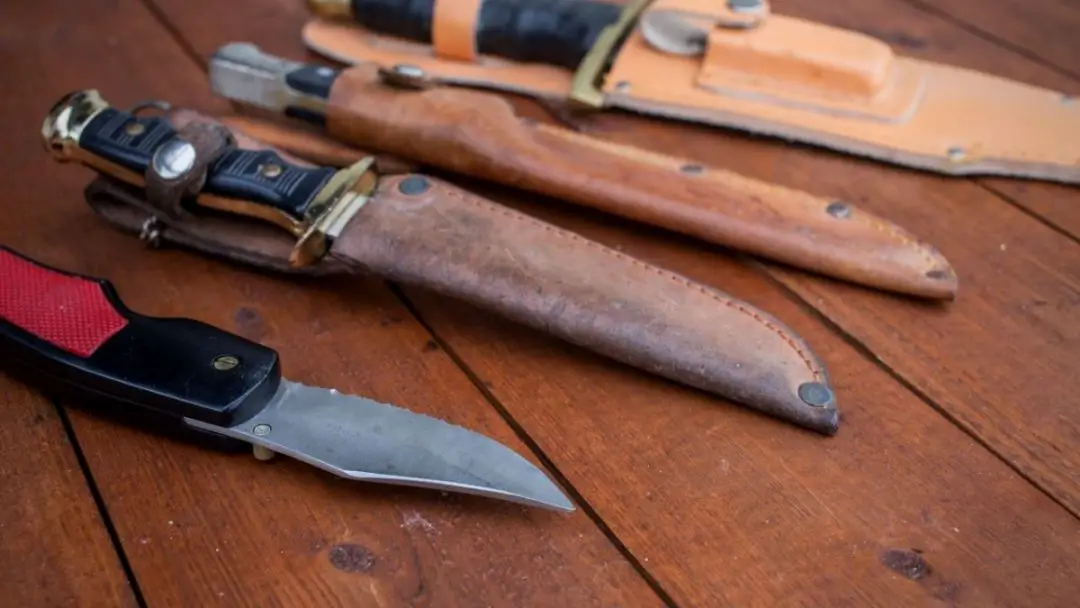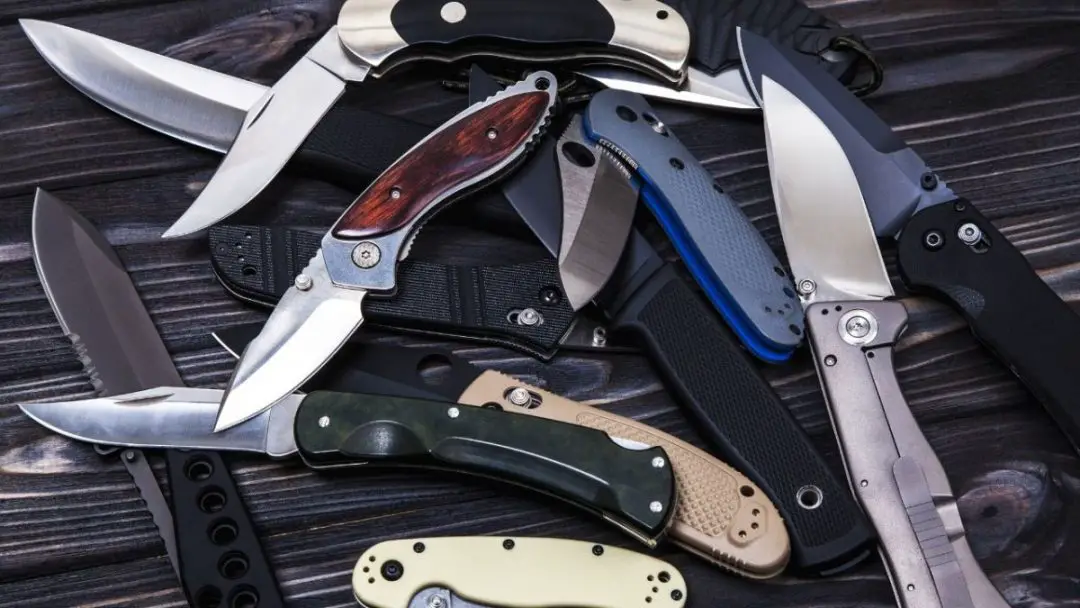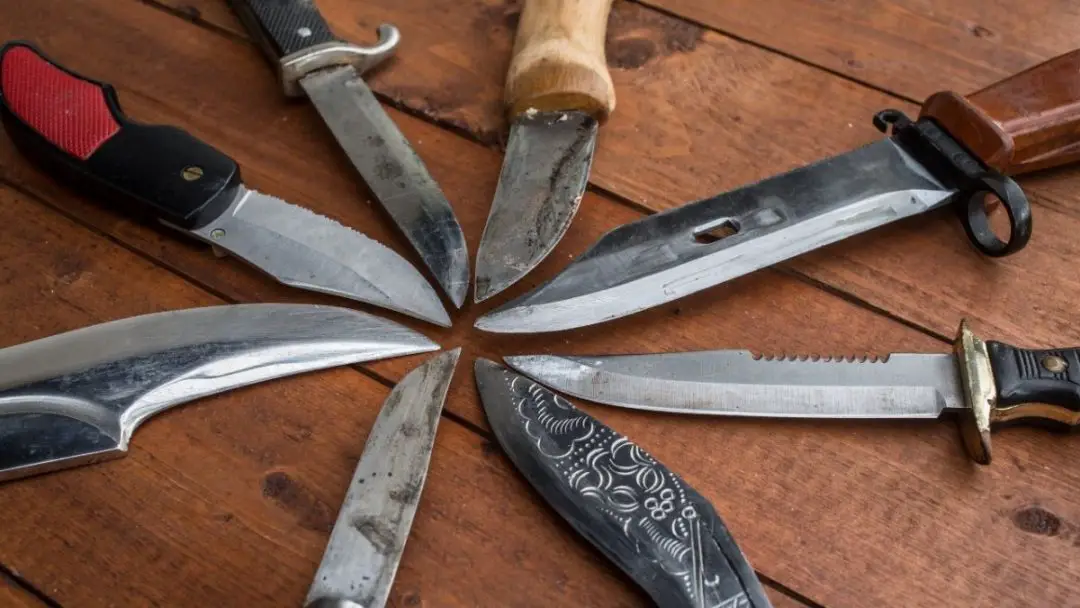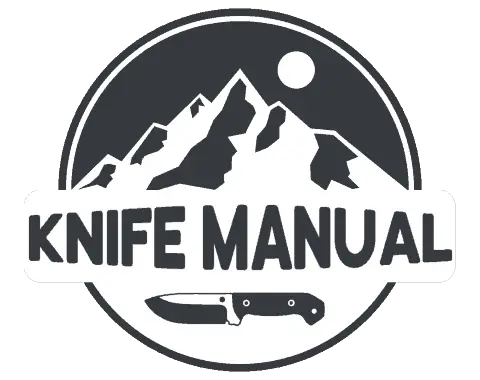There is a lot to think about when you are trying to figure out what knife would be best for you and your needs, you want to avoid wasting money and buying a knife that you don’t like and will never use. I don’t know how many times I have needed a knife for a particular task but was just overwhelmed by the sheer amount of options out there.
Many people run into this problem, and there are three main ways that it is commonly solved. Either, people buy every knife that they run into and might like, they buy zero knives because they are afraid to spend money on knives that they potentially won’t like, or, there are the few people that think about what they want out of a knife and wisely only buy a few that they really need and enjoy.
Most of us, including me, fall into one of the first two categories.
We either buy all the knives we can get our hands on, or we buy none. But there is a significant advantage to buying only the knives that you really need and will enjoy. Trust me, your bank account will thank you.
While each person is unique and has their own needs and preferences with knives, here are 19 questions that can help you narrow down your options and help you choose knives that fit your needs and that you will enjoy owning.

Table of Contents
1. What Will You Use Your Knife for?
One of the first questions to ask yourself when you are looking for the perfect knife for your needs is, “what are my needs?”.
This might seem a little dumb and obvious to some, but really thinking about what you will primarily be using your knife for will be super useful when answering some of the later questions. Even if you aren’t very specific, just look at your everyday needs and things you like, or might like, to do with your knife and just remember them or write them down.
There is a big difference between what traits you want in a knife mainly used for bushcraft and one that is just carried in your pocket for daily tasks.
Figuring out what you primarily want to do with your knife is a major step in deciding what knife to buy. Make sure to really think about this one because you will be referring back to your answer a lot when you answer some of the later questions.
2. Folding or Fixed Blade?
The next question to ask yourself is whether you want a folding knife or a fixed blade knife.
Fixed blade knives are really good for intensive activities and tasks but can also be used for more moderate things if you just really like using a fixed blade knife. A lot of this decision comes down to what you personally prefer.
Folding knives are great for when you just want to throw a knife in your pocket for everyday carry but many folding knives can also be very durable and can handle some really tough tasks.
There really is no right and wrong answer. Just think about what you personally prefer and what makes sense for the type of tasks you plan on doing with your knife.
3. What Type of Tang?
While this question really only applies to people that need or want a fixed blade knife, it is still important for everyone to consider and it might make you want a fixed blade knife if you previously thought you wanted a folder.
There are many different types and styles of knife tang. You can, however, generally split them up into two main categories: full tang and partial tang.
Full tang knives are good for survival, bushcraft, and any intense activity or when you just need a really solid and strong knife. The downside to full tang is the added weight because there is more metal in the knife.
Partial tang is a little bit weaker and less durable than full tang, but not by much. Partial tang is slightly lighter because there is less metal in the knife, but again, it is a little less strong.
4. How Expensive?
The answer to this question is vastly different for everyone. However, it is also very important to consider because it will vastly affect what knife options are available to you in your price range.
The more money you spend on a knife doesn’t always directly relate to an increase in quality. While it does in many cases, you can get some really high quality and well-made knives for a considerably low price.
If this knife is going to be an everyday carry knife or you plan to use it and keep it for a long time, you might consider spending a little more on it so that you can get a really high-quality blade that will last for a long time.
5. What is the Total Weight?
Often not a huge question for many, the total weight of a knife is still something to think about when choosing a knife.
There are many times that you will want to really look at and consider the overall weight of a knife. If you are taking your knife on a long hike, using it as an everyday carry blade, or using it for any other task where the weight of the knife matters, I urge you to consider this question carefully.
It will often be a pain in the back (literally) if you add a knife to your backpack that is super heavy if you are going on a long hike.
6. What is the Total Length?
This kind of goes along with the total weight of the knife question, but in a slightly different way. Obviously, the longer the knife, the heavier it will generally be. But is there a minimum knife size that you would need to do the tasks that you want to be able to complete with a knife.
Just think about whether you prefer or need a longer and heavier knife or a shorter and lighter one. Again, this comes down to preference and what you will be mainly using your knife for.

7. What Brand or Style?
This question is primarily about personal preference and what you like. While there are obviously some really good and quality knife brands and makers, there are so many out there and so many choices that it really comes down to what you like.
If you cant think of a brand that you really like, maybe consider a certain design that you are drawn to or would work well for what you intend to do with your knife.
One of the main and most important things that are going to make you actually use your knife, is if you really like the design and how it looks. It’s really obvious, but also very true and many people seem to overlook it.
8. What Blade Material?
Choosing a knife blade material is often one of the most confusing and stressful choices to make about a new knife, especially for people that don’t know a lot about the different options out there.
There are two main routes that you can take when choosing a knife blade material. The first option is to go for functionality and durability, and the second is to go for beauty and the way the material looks.
It comes down to what you want to use your knife for and whether that needs a strong and sharp blade or you can get away with a less durable blade that is pretty and beautiful.
9. What Blade Shape?
The blade shape and style is an important aspect of your knife blade to consider. There are a lot of different blade shapes out there and they all have their uses and some are just there to look cool.
Think about what you will be doing with your knife primarily and pick a blade shape that fits the activity. If you are having trouble deciding, clip and drop point blade are a standard blade shape that can work well for almost any task.
10. Serrated Blade or Not?
When considering whether your knife should have a serrated blade or not, think about when you would actually use a serrated edge.
Personally, I prefer a non-serrated blade edge for the large majority of my knives. It always seems to just get in the way and the times where I actually use the serration are few and far between.
There is always the ever-popular option of having a partially serrated blade. This works well for many people because you are getting the best of both worlds. The serrated edge is there when you need it, but the majority of tasks can be done with a smooth edge.
11. What Blade Grind?
The number of different blade grinds that there are to choose from is pretty ridiculous. Unless you are planning on using your knife for something really specific that requires a certain blade grind, I would just go with a basic convex grind.
There are definitely more options out there than a convex grind, but it works well for most jobs and is a safe bet if you don’t have another particular grind in mind for your blade.
12. How Long is the Blade?
The length of a blade is an important thing to consider because it will either hinder or help you with whatever you are trying to do with your knife. Too long of a blade and it will get in the way and just cause you problems, and too short of one and it will not allow you to complete the tasks that you want to be able to do.
For everyday carry knives and other knives that you will have on you for a long time, a shorter blade will probably suit you best. For someone that is doing some more intensive work but doesn’t have to carry their blade a lot, a longer blade will get the job done easier in many cases.
It really comes down to what would suit your needs the best and whether you prefer to work with a short blade or a longer one.

13. How Thick is the Blade?
There is a fine line between a blade that is too thin and one that is too thick. You want your knife blade to be thick enough so that it is durable and able to take on whatever task you are using it for but not to thick so that it doesn’t hinder your ability to effectively use it.
For a knife that is going to be used for survival or bushcraft purposes, a thicker blade is usually the way to go because your knife will be taking a beating quite often and you don’t want it to break due to a thin blade.
On the other side of things, if you are just using your knife for everyday carry or for a purpose that is less intensive and stressful to the knife, a blade that is on the thinner end of the spectrum will work just fine and will be lighter and easier to carry.
14. What Type of Spine?
For most people, the spine of their knife is one of their least concerns. I mean, who is ever picking out a knife and thinking, “I wonder what the spine of the knife is like?” Yeah, next to nobody.
However, the spine of a knife can be something to consider and think about so that you get one that will work for you and not against you. It really all depends on what you plan to use your knife for, but some of the things to look at on a knife spine are whether it is rigid or smooth and whether or not it can be used to strike a Ferro rod.
15. What Handle Material?
The handle material is another big decision and thing to really think about what would be best for your needs.
When it comes to knife handle materials, there are three main options: metal, natural, and synthetic. Each has its downsides and advantages and it really comes down to what you are using your knife for and what you prefer.
Metal handles on knives are really strong and resistant but can be pretty hard to hold and get cold when the air around them gets cold. Natural handle materials on knives make really great feeling and looking handles but can be lacking some durability. And finally, synthetic handle materials for knives are very strong and durable but can be lacking some of the elegant style and beauty that the other options have.
16. Handle Design or Style?
If you don’t pick the right design and style for your knife handle, your hand is forever going to hate you. Trust me.
Especially if you will be using your knife a lot, a good and sturdy handle design is a must-have. For lesser used knives, it is a little less important, but the design and style of a knife handle is always something to be thinking about.
You don’t want to be using a knife that is just a pain to hold. It will not only hurt your hand to use the knife but will make you not like using it and that completely destroys the purpose of having a knife in the first place. If you arent going to use it, why have it?
17. How Long is the Handle?
I would base this off of your hand size and what you prefer. You don’t want to have a knife that has a handle that is too big or too small for your hand.
If the handle of your knife is the wrong size for your hand, it will make you not want to use it because it will be uncomfortable to hold. Just make sure the handle fits comfortably in your hand and works well when you are using it.
18. Lanyard Hole in the Handle?
This question might seem a little dumb to some people but you have no idea how many times I have wanted to put a lanyard on a knife and it just doesn’t have a hole in the handle for it. It’s such a small thing, but it can make a huge difference.
Not everyone likes lanyard loops on their knives, but unless you know you don’t like them, getting a knife with a simple hole in the handle will leave your options open and might just save you a headache later on.
19. Is there a Sheath or Not?
The last thing to consider is whether or not your knife has a sheath or not. Sheaths are really good ways to protect your knife and have a simple way to carry it, but not every knife needs one.
Personally, I like sheaths for my knives because it just gives me peace of mind knowing that the blade isn’t being chipped when it’s in my bag. But if you aren’t planning on carrying your knife often or it is a folding knife, you often don’t need a sheath.
Conclusion
While there are so many things to consider and think about when you are choosing the perfect knife for your needs, it doesn’t have to be that complicated. When it comes down to it, most of the decisions and features that you want on your knife will reflect what you plan to do with it.
Just really figuring out the main purpose of your knife and what you primarily plan to use it for will be a major leap in the right direction to finding your perfect knife.
After you have figured out your knife’s purpose and answered all the questions that I listed above, it will be simple to look at all the knife options and find the perfect one for you. Just eliminate the ones that don’t match what you want in a knife, and the knives that are left when you are finished eliminating will often be the best choices for you.

